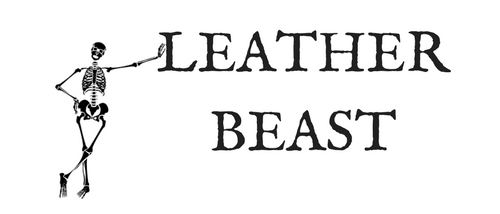6 Ways to Save Money on Your Beginner Leatherworking Toolkit
Have you ever browsed Amazon or your local leathergoods shop and been totally overwhelmed by the array of different leatherworking tool options? Not only are there so many tools to choose from, but the price points on some of these tools varies wildly.
This used to totally overwhelm me and believe me I spent a pretty penny on tools when I was first getting started. But over the years, i’ve realized that you only need a few key tools and that there are a few tricks you can use, when it comes to saving some of your hard-earned cash on tools.
So if you’re looking for a few easy ways to save a few bucks on your beginner toolkit (yea, who wouldn’t want to save a few bucks?!) then keep reading. The tips covered here will allow you to take that savings and spend it elsewhere, like on materials or hardware or anything else you might need for your leatherworking .
1 I You only need a few tools not 50.
Anyone who is telling you that for your beginner toolkit you need this tool or that tool or these dyes and machinery are wrong. You might want to invest in some of these tools later on, but right now, you want to keep your tool purchases streamlined. Focus on obtaining the basic tools needed to cut, measure, hammer, guide, and mark stitches and you’ll be set!
Whether you’ve started your kit already or are completely new, you might want to check out this list here that gives you a list of the top 10 tools needed.
2 I Half of these tools you probably already have at home.
You may have heard me make this argument before but i’m saying it again, because it’s kind of amazing what you can find in your garage and basement that you already own.
Do you have a steel headed hammer?
A rubber mallet?
Some sandpaper?
Yes?
Well then, you’re already ahead of the game! You’re on your way to getting half of your toolkit together without even pulling out your credit card.
These are the 6 tools that I bet you already have at home:
1-Steel headed hammer
2-rubber mallet
3-sandpaper
4-rags
5-drafting compass or wing dividers
3 I Shopping for tools on Amazon is a time and cost saver.
I’ve actually set up a wishlist on Amazon here. You can check that out and grab what you need from the cart. This is not only a time saver and time is money, right? But also will save you lots of frustration and a sense of overwhelm if you know exactly what you need right now.
You can also find a lot more variation in brands and options on Amazon, than you might at your local leather retailer.
4 I Use stitching chisels instead of pricking irons.
Now I started learning leatherwork on pricking irons and for a while I thought I was hot shit for only using these tools and being very European and elitist about it. BUT in the last year I’ve been experimenting and using stitching chisels in my own work and honestly, I’d have a hard time coming up with any cons to using the chisels.
The pros of using stitching chisels:
The stitching chisels themselves are a less expensive tool. I paid around $200 for my set of Vergez Blanchard pricking irons and I think my set of Craftool Pro stitching chisels cost me around $75. I could have saved $125 but I like to learn things the hard way.
Stitching chisels pierce the leather all of the way through totally removing the need for a 16th tool, the diamond point awl. Pricking irons only mark your stitches and during saddle-stitching you use a diamond point awl to create the hole that you stitch through. So a stitching chisel is like a 2 in 1 tool. It serves as the stitch marker and stitch hole maker.
Lastly, stitching chisels make the process of saddle stitching easier and more foolproof. Using pricking irons requires a good deal of skill and there is a lot of nuance to get used to when using the diamond point awl to create your stitching holes. The awl has to be super sharp and you need to get your angles just right so that the back of your work is just as clean as the front of your work. By creating your holes on a flat surface prior to stitching with chisels, you’re simplifying the process allowing you to later concentrate on needles, thread and stitching and nothing else.
5 I Use stitching pony instead of a stitching clam.
I personally use a stitching clam and I love my clam. It’s a beautiful tool, it’s a constant conversation starter and was made in France by some lovely woodworking artisans. But it also cost me $200.
I don’t regret buying it, but if you’d prefer to cut some budgetary corners, you can absolutely go with a stitch pony for a quarter of the price (ranging $35-$90). The stitching pony will still get you good results.
6 I Purchase used tools on ebay, craigslist and at yard sales.
Once you start looking in these places it’s amazing what you’ll find. I never thought this was possible until I started looking and then the old traditional tools started popping up everywhere. After a few searches on ebay for ‘traditional leatherworking tools’, or ‘C.S. Osborne’ (which is a well established american leatherworking tool mfg) I started finding all kinds of tools and added bonus - tools with some history behind them. So to me, that’s pretty cool.
If you want to save some money on your basic toolkit (and who doesn’t) just remember these 6 tips when purchasing tools.
I learned the hard way and my wallet (the contents of my wallet) suffered, but that doesn’t mean that you have to suffer!
Don’t think that you need a ton of fancy tools and all kinds of stuff to get started.
Keep the tool portion of learning traditional leatherwork basic and streamlined so you can start to lay the foundation for your leatherworking hobby or career and work on your preparation and saddle-stitching techniques.

